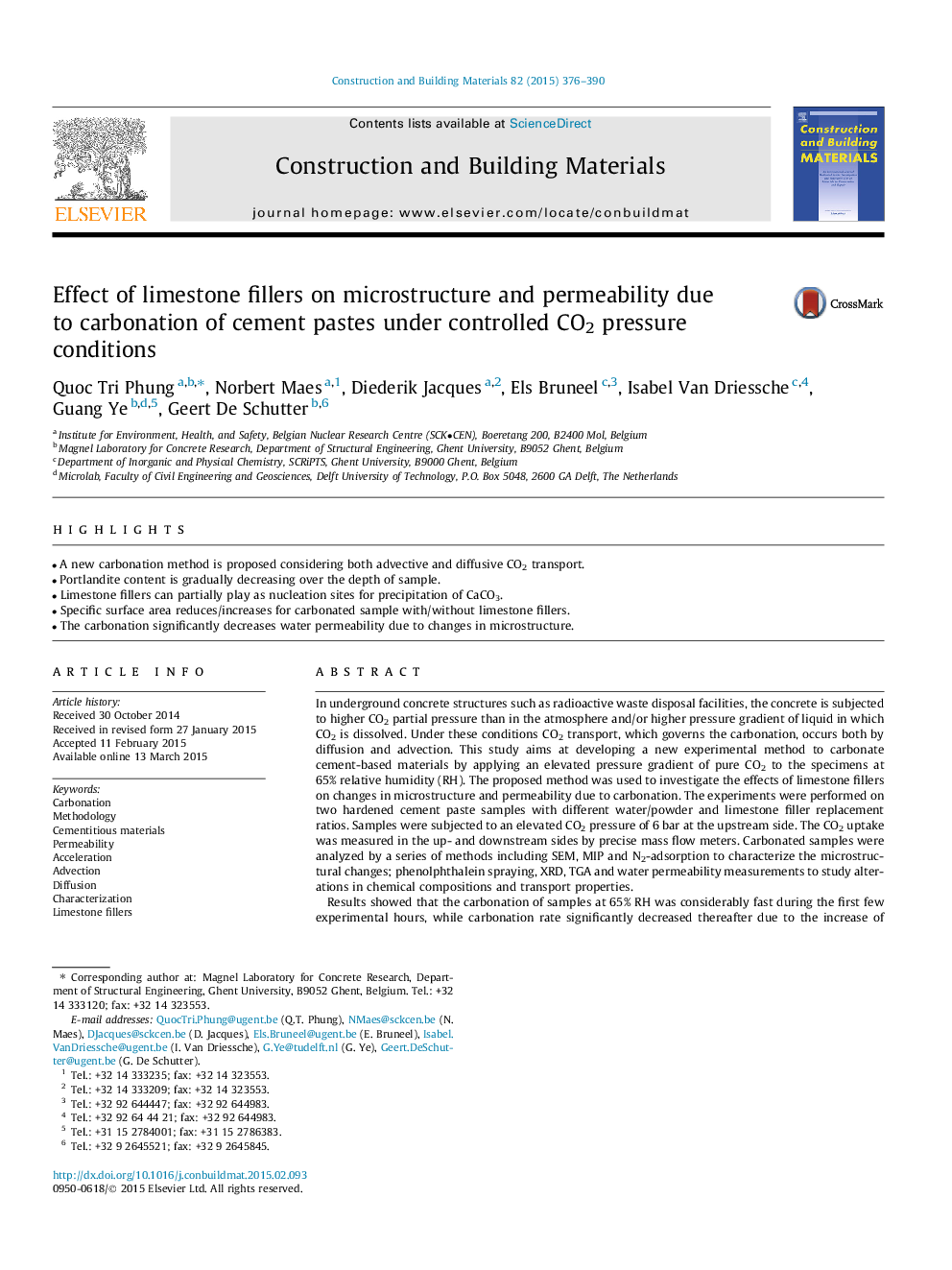| کد مقاله | کد نشریه | سال انتشار | مقاله انگلیسی | نسخه تمام متن |
|---|---|---|---|---|
| 256943 | 503567 | 2015 | 15 صفحه PDF | دانلود رایگان |

• A new carbonation method is proposed considering both advective and diffusive CO2 transport.
• Portlandite content is gradually decreasing over the depth of sample.
• Limestone fillers can partially play as nucleation sites for precipitation of CaCO3.
• Specific surface area reduces/increases for carbonated sample with/without limestone fillers.
• The carbonation significantly decreases water permeability due to changes in microstructure.
In underground concrete structures such as radioactive waste disposal facilities, the concrete is subjected to higher CO2 partial pressure than in the atmosphere and/or higher pressure gradient of liquid in which CO2 is dissolved. Under these conditions CO2 transport, which governs the carbonation, occurs both by diffusion and advection. This study aims at developing a new experimental method to carbonate cement-based materials by applying an elevated pressure gradient of pure CO2 to the specimens at 65% relative humidity (RH). The proposed method was used to investigate the effects of limestone fillers on changes in microstructure and permeability due to carbonation. The experiments were performed on two hardened cement paste samples with different water/powder and limestone filler replacement ratios. Samples were subjected to an elevated CO2 pressure of 6 bar at the upstream side. The CO2 uptake was measured in the up- and downstream sides by precise mass flow meters. Carbonated samples were analyzed by a series of methods including SEM, MIP and N2-adsorption to characterize the microstructural changes; phenolphthalein spraying, XRD, TGA and water permeability measurements to study alterations in chemical compositions and transport properties.Results showed that the carbonation of samples at 65% RH was considerably fast during the first few experimental hours, while carbonation rate significantly decreased thereafter due to the increase of internal RH. However, by alternating carbonation with drying periods, as proposed here, carbonation rates remained high during the complete experiment. Our study evidenced that, in addition to portlandite, also C–S–H was partly carbonated under the studied conditions resulting in gradual profiles of these phases. Limestone filler replacement promoted the CO2 uptake because calcite precipitates preferentially on limestone particles than on portlandite and C–S–H phases as the latter inhibits further carbonation. C–S–H carbonation was more enhanced in samples without limestone fillers which resulted in a BET specific surface area increase. On the other hand, in samples with limestone fillers, BET specific surface area decreased because of porosity and pore size decreases. The carbonation induced changes in the microstructure which resulted in a significant decrease in water permeability. As a consequence of larger BET specific surface area, higher porosity and pore size reductions, the decrease in permeability was more pronounced in the sample without limestone fillers.
Journal: Construction and Building Materials - Volume 82, 1 May 2015, Pages 376–390